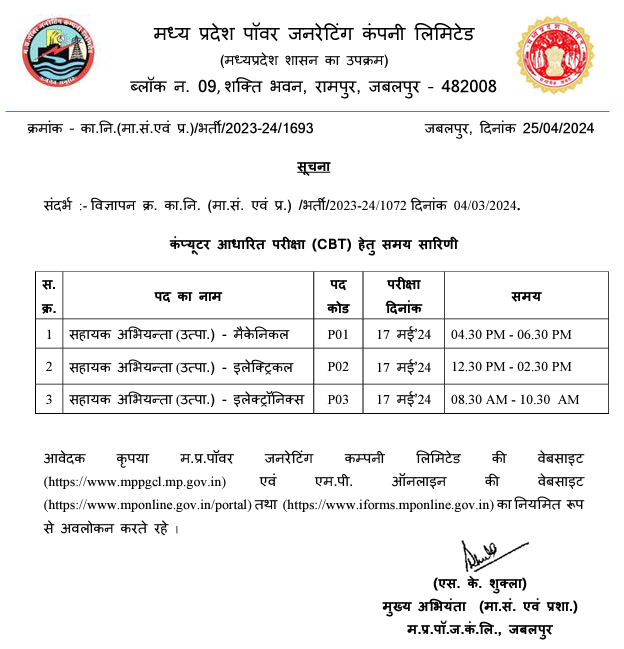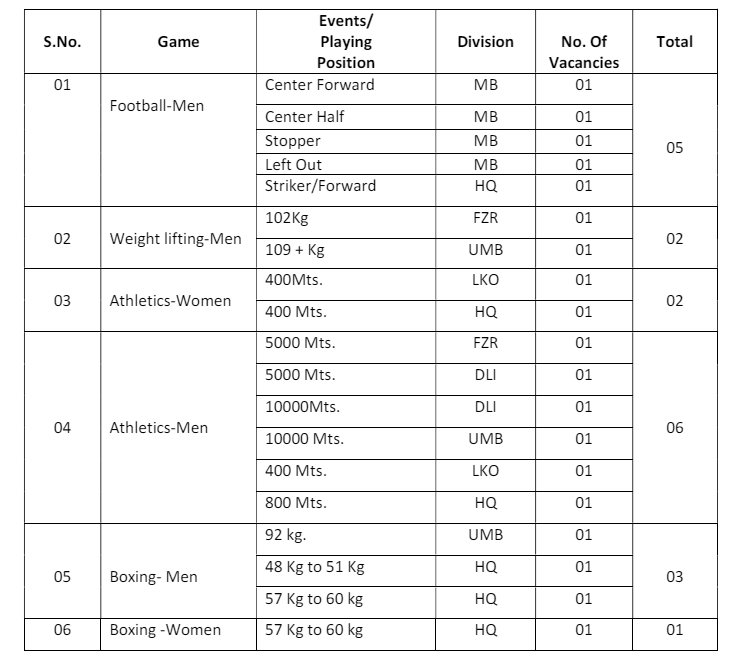AWARDS AND THEIR RELATED FIELD
Ratna: It
is the highest civilian award of the India. The award was given for outstanding
achievements in the arts, literature, science and public services but the government expanded the criteria to
include “any field of human endeavor”. The number of annual awards is
restricted to a maximum of three in a particular year.
Prize: The
Nobel Prize is widely regarded as the most prestigious award available in the
fields of literature, medicine, physics, chemistry, peace, and economics.
Award: The
Academy Awards, or “Oscars”, is an annual American awards ceremony
hosted by the Academy of Motion Picture Arts and Sciences to recognize
excellence in cinematic achievements in the United States film industry as assessed
by the Academy’s voting membership. The various category winners are awarded a
copy of a statuette, officially called the Academy Award of Merit, which has
become commonly known by its nickname “Oscar”. The awards, first
presented in 1929.
Swarup Bhatnagar award: The Shanti Swarup Bhatnagar Prize for
Science and Technology (SSB) is a science award in India given annually by the
Council of Scientific and Industrial Research (CSIR) for notable and
outstanding research, applied or fundamental, in biology, chemistry,
environmental science, engineering, mathematics, medicine and Physics.
Prize: The
Kalinga Prize for the Popularization of Science is an award given by UNESCO for
exceptional skill in presenting scientific ideas to lay people.
Prize: Journalism; The Pulitzer Prize is an award for achievements in
newspaper and online journalism, literature, and musical composition in the
United States.
Prize: Mathematics; The
Abel Prize is an international prize awarded annually by the Government of
Norway to one or more outstanding mathematicians.
Award: Music; A
Grammy Award, or Grammy, is an accolade by the National Academy of Recording
Arts and Sciences of the United States to recognize outstanding achievement in
the music industry.
Prize: Architecture; The Royal Institute of British Architects Stirling
Prize is a British prize for excellence in architecture.
Khan Award: Architecture; The Aga Khan Award for Architecture
(AKAA) is an architectural prize established by Aga Khan IV in 1977. It aims to
identify and reward architectural concepts that successfully address the needs
and aspirations of Islamic societies in the fields of contemporary design,
social housing, community development and improvement.
Prize: Architecture; The Pritzker Architecture Prize is awarded
annually “to honor a living architect.
Puraskar: Literature; Bihari Puraskar is a literary award instituted by
K. K. Birla Foundation. The award is named after the famous Hindi poet Bihari
and is awarded to an outstanding work published in Hindi or Rajasthani by a
Rajasthani writer.
Devi Award: Literature; The Moortidevi Award is an annual
literary award in India presented by the Bharatiya Jnanpith organization for a work
which emphasizes Indian philosophy and culture.
Prize: Literature; It is an annual award for the best original novel,
written in the English language, and published in the UK literary award
Phalke Award: Cinema/Films; The Dadasaheb Phalke Award is India’s
highest award in cinema. It is presented annually at the National Film Awards
ceremony by the Directorate of Film Festivals, an organisation set up by the
Ministry of Information and Broadcasting.
Samman: Literature; The award was instituted in 1991 by the K. K.
Birla Foundation. It is an annual award given for outstanding prose or poetry
literary works in any 22 Indian languages.
award: Literature; The award was instituted in 1961 and it is It is
presented by the Bharatiya Jnanpith, a trust founded by the Sahu Jain family,
the publishers of the newspaper The Times of India. It is an annual award given
for outstanding prose or poetry literary works in any 22 Indian languages.
Samman: Literature; Vyas Samman is awarded annually by the K.K. Birla
Foundation in recognition of the Hindi literary work published in past 10
years.
Award: outstanding
performance from the sportspersons in sports and games.
Award: eminent
coaches of any particular sport .
Chand Award: The
award that is given to the veteran sportspersons of India for their lifetime
achievement in their respective field of sport is named as the Dhyan Chand
Award for Life Time Achievement in Sports and Games.
Gandhi Khel Ratna Award: The Rajiv Gandhi Khel Ratna is the
highest honour bestowed to a sportsperson for his/her achievements in India.
Different types of Awards and Prizes
• It is the most coveted international award of
the world.
• It was instituted by the inventor of dynamite,
Alfred Bernard Nobel (1833-96)
• The award is given on Dec.10, which is the
death anniversary of its founder.
• Nobel made a trust from the money that he
earned through the patent of his invention whose interest is used to give the
money for the Nobel Prizes.
• Nobel Prize is given every year to those
eminent person who have made pioneering achievements in the field of Physics,
Chemistry, Medicine, Peace, Literature and Economics.
• Apart from Economics, all other categories
have been given since 1901. Economics Nobel Prize was in 1967 and was first
given in 1969.
Pulitzer Prize
• It was instituted in 1970 and named after the
US Publisher Joseph Pulitzer.
• It is conferred annually in the USA for
accomplishments in journalism, literature and music.
Magsaysay Awards
• They were instituted in 1957 and named after
Ramon Magsaysay, the late President of Philippines, who died in an air crash.
• This award is given annually on August 31, for
outstanding contributions to Public service, community leadership, journalism,
literature and creative arts and international understanding.
• They are often regarding as the Nobel Prize of
Asia.
Booker Prize
• It is the highest literary award given to the
authors of British, Irish and Commonwealth countries.
• It is instituted in 1968 by the Booker Company
and the British Publishers Association along the lines of Pulitzer Prize of US.
• Booker Prize has been renamed as Man Booker
Prize, as the sponsorship has been taken by the Man Group, an international
stockbroker.
Jawaharlal Nehru Award for International
Understanding
• It was instituted in 1965 by the Government of
India.
• It is given annually to persons for
outstanding contributions to the promotion of international understanding and
goodwill among the people of the world.
Oscar Awards
• These awards were instituted in 1929 and
conferred annually by the Academy of Motion Pictures in USA.
• These are considered the most prestigious
award in the cinema world.
• The first Indian to get an Oscar was Bhanu
Athaiya for the movie ‘Gandhi’.
• Satyajit Ray was the First Indian who was
awarded Oscar for lifetime achievements in cinema in 1992.
Right Livelihood Award
• It was instituted in 1980 by the Right
Livelihood Society, London.
• It is renowned as alternate Nobel Award to
promote and contribute in the field of environment and social justice.
Mahatma Gandhi Peace Prize
• It was instituted in 1995 by the Government of
India.
• It is presented for international peace on the
lines of Nobel Prize.
UNESCO Peace Prize
• It is presented by United Nation Educational,
Scientific and Cultural Organization (UNESCO) for extraordinary contribution
for international peace.
UNESCO Human Right Award
• It is also presented by UNESCO for
contributions in the field of Human Rights Awareness.
• It is given every alternate year.
UN Human Right Award
• It is presented by United Nation (UN) for
personal contribution for the cause of human rights.
• It is presented every sixth year.
World Food Prize
• It is presented by Food and Agriculture
Organization (FAO), one of the branches of UNO, for the cause of agriculture
and food development.
Olympic Gold Order
• It is presented by the International Olympic
Committee for distinguished services in the development of the OLYMPIC
MOVEMENT.
Indira Gandhi Award for International Peace,
Disarmament and Development
• It is presented by Indira Gandhi Memorial Fund
for specialized contribution in the filed of International disarmament and
development.
Bharat Ratna
• It is the highest civilian award of India. It
is presented by the Government of India.
• It is presented for exceptional public service
and rarest achievements in the field of art, literature and science.
• It was instituted in 1954 and the first
recipient was Dr. Radhakrishnan.
• Padma Vibhushan is the second highest civilian
award for distinguished services in any field including Government service.
• Padma Bhushan and Padma Shree are the other
important civilian awards.
Bhartiya Jnanpeeth Awards
• It was instituted in 1965 and is given for
distinguished works in any reconised language by a scholar.
Sahitya Akademi Award
• It was instituted in 1955 and is given for any
exclusive writing in any of the 22 languages including English literature
during last 5 years.
Murtidevi Award
• It was constituted in 1948 and is given in any
Indian language or English literature, for distinguished contribution to Indian
values.
Saraswati Samman
• It was instituted in 1991 by the K. K. Birla
Foundation and is given for any distinguished literary work made during last 10
years in any of the Indian language.
Tansen Awards
• These awards are given by the Government of
Madhya Pradesh for the outstanding contribution in the field of music.
Vyas Samman
• It was instituted in 1992 by K. K. Birla
Foundation for outstanding contribution to Hindi literature.
Iqbal Samman
• These awards are given by the Government of
Madhya Pradesh for the outstanding contribution in the field of literature.
Shanti Swarup Bhatnagar Awards
• These awards are given to the Indian scientist
for their exceptional performance.
R.D. Birla Award
• These awards are given in the field of medical
sciences.
Dhanvantri Award
• These awards are given for the extra ordinary
performance in medical sciences.
Arjuna Awards
• These were instituted in 1961and given by
Sports Ministry, Government of India.
• These are given for the special achievements
in different types of sports.
Dronacharya Awards
• These were instituted in 1985 and given by
Sports Ministry, Government of India.
• These are given to sports coaches.
Rajiv Gandhi Khel Ratna
• It was instituted in 1962 and is presented for
commendable display by the players.
Gallantry Awards
• Param Vir Chakra : It is India’s highest award
for bravery.
• Mahavir Chakra : It is the second highest
gallantry award.
• Vir Chakra : It is the third highest gallantry
award.
• Ashok Chakra : It is the highest peace-time
gallantry award.
Indian
Gallantry Awards
|
PARAM VIR CHAKRA
: |
It is the highest decoration of valour awarded
for the most conspicuous bravery or some daring or prominent act of valour or self-sacrifice in the presence of the enemy on land,sea or air. |
|
MAHA VIR CHAKRA
: |
It is the second highest decoration. It is
awarded for acts of conspicuous gallantry in the presence of the enemy, whether on land, at sea or in the air. |
|
VIR CHAKRA :
|
It is the third in the order of awards for acts
of gallantry in the face of the enemy on land,sea or air. |
|
ASHOK CHAKRA :
|
Awarded for the most conspicuous bravery or
some daring act of valour or self-sacrifice on land, at sea or in the air. |
|
KIRTI CHAKRA :
|
Awarded for conspicuous gallantry.
|
|
SHAURYA CHAKRA :
|
Awarded for an act of gallantry.
|
|
PARAM VISHISHT
SEWA MEDAL : |
Awarded in recognition of distinguished service
of the most exceptional order. |
|
ATI VISHISHT
SEWA MEDAL : |
Awarded in recognition of distinguished service
of an exceptional order. |
|
VISHISHT SEWA
MEDAL : |
Awarded in recognition of distinguished service
of a high order. |
|
SENA MEDAL / NAU
SENA : MEDAL/VAYU SENA MEDAL |
For good work on the field, at sea or in the
air. |
NOBEL PRIZE
- Year of
Institution : 1901 - Founder :
Alfred Bernhard Nobel (1833–96) - Number of
Awards : Six - Physics
- Chemistry
- Physiology
or Medicine - Literature
Peace - Economics
(Established in 1967) - Date on
which it is awarded : December 10
Anyone proposing himself for Nobel Prize is ruled out of consideration.
The recommendations have to come from outside. The Noble Prizes are
presented annually, December 10, the death anniversary of the founder and
the festival day of the Foundation. Originally it was awarded for works in
five disciplines. The prize for Economics was instituted in 1967, by
Sverigs Riksbank, Swedish Bank, in celebration of its 300th anniversary
and was awarded for the first time in 1969, it is called Nobel Memorial
Prize in Economics.
Nobel Foundation’s Prize Awarding Bodies
the Nobel Prize in Physics
- The Nobel Assembly of
Karolinska Chirugical Institute, Sweden, awards the Nobel Prize in
Medicine and Physiology. - The Swedish Academy awards the
Prize in Literature. - The Committee of the Norwegian
Parliament awards the Prize for Peace. - The Bank of Sweden Awards the
Nobel Prize in Economics.
The amount of each prize varies with the income from the fund. The value of
nobel prize was 150,782 Swedish Crown in 1901. Now the value of nobel prize has
increased to 10,000,000 Swedish Crown in 2004 as compared to 9,000,000 Swedish
Crown in 2000. No Nobel Prize was awarded for 1940, 1941 and 1942; Prizes for
Literature were not awarded for 1914, 1918 and 1943.
Maximum Nobel Prizes : US citizens have won outright as well as shared
the maximum number of Nobel Prizes. Individually, the only person to have two
Nobel Prizes: Dr Linus Carl Pauling, Professor of Chemistry at California. He
received the Nobel Prize for Chemistry in 1954 and the Peace Prize in 1962
First Couple to Receive the Nobel Prize : Madame Marie Curie shared the
1903 Nobel Prize for Physics with her husband Pierre Curie, she later won the
Nobel Prize for Chemistry in 1911,
Three Nobel Prizes : The International Committee of the Red Cross was
awarded the Nobel Prize for Peace three times: 1917, 1944 and 1963.
INDIAN NOBEL LAUREATES
|
Name
|
Field
|
Year
|
|
Rabindranath Tagore (1861 – 1941)
|
Literature (Gitanjali)
|
1913
|
|
Dr. C.V. Raman (1888 – 1970)
|
Physics (Raman Effect)
|
1930
|
|
Dr. Hargobind Khorana (b. 1922)
(of Indian Descent) |
Medicine (Genetic Code)
|
1968
|
|
Mother Teresa (1910 – 97)
|
Peace
|
1979
|
|
Dr. S. Chandrasekhar (1910 – 95)
|
Physics (Chandrasekhar Limit)
|
1983
|
|
Dr. Amartya Sen (b. 1933)
|
Economics (Welfare Economics)
|
1988
|
|
Sir V.S. Naipaul (b. 1932)
(of Indian Desent) |
Literature
|
2001
|
|
Venkataraman Ramakrishnan
|
Chemistry
|
2009
|
Republic Day Honours and Awards
is the Param Vir Chakra which is awarded for the most conspicuous bravery or
some daring or pre-eminent act of valour or self-sacrifice in the. presence of
the enemy, whether on land, at sea or in the air.
The decoration is made of bronze and is circular in shape. It has, on the
obverse, four replicas of “Indra’s Vajra” embossed round the State
emblem in the centre. On the reverse, the words “Param Vir Chakra”
are embossed both in Hindi and English with two lotus flowers in the middle.
The decoration is worn on the left breast with a plain, purple coloured riband
about 3.2 cm in width.
Mahavir Chakra : Mahavir Chakra is the second highest decoration for
valour and is awarded for acts of conspicuous gallantry in the presence of
enemy, whether on land, at sea or in the air.
It is made of standard silver and is circular in shape. Embossed on the obverse
is a five pointed heraldic star with domed centre-piece bearing the gilded
State emblem in the centre, The words “Mahavir Chakra” are embossed
both in Hindi and English on the reverse with two lotus flowers in the middle.
The decoration is worn on the left breast with a half-white and half-orange
riband about 3.2 cm in width, the orange being near the left shoulder.
Vir Chakra : Vir Chakra is third in the order of awards given for the
act of gallantry in the presence of the enemy, whether on land, at sea or in
the air.
The decoration is made of standard silver and is circular in shape. Embossed on
the obverse is a five pointed heraldic star which has an Ashoka Chakra in the
centre. Within this chakra, there is a domed centre-piece bearing gilded State
emblem. On the reverse, the words “Vir Chakra” are embossed, both in
Hindi and English, with two lotus flowers in the middle. The Chakra is worn on
the left breast with a half-blue and halforange riband, about 3.2 cm in width,
the orange being nearer the left shoulder.
Ashok Chakra : Ashok Chakra is the highest award for gallantry during
peacetime.
Kirti Chakra : The decoration is the nation’s second highest award for
gallantry during peacetime. It is made of standard silver and is circular in
shape. The obverse and the reverse are exactly the same as in Ashok Chakra.
The Chakra is worn on the left breast with a green silk riband, about 3.2 cm in
width and divided into equal segments by two orange vertical lines.
Shaurya Chakra : The decoration is awarded for an act of gallantry. It
is exactly like Ashok Chakra, except that it is made of bronze.
The Chakra is worn on the left breast with a green silk riband, about 3.2 cm in
width and divided into four equal segments by three orange vertical lines.
Param Vishisht Seva Medal, Ati Vishisht Seva Medal, Vishisht Seva Medal :
The Vishisht Seva (Distinguished Service) Medals are awarded to personnel of
all the three services in recognition of distinguished service of the
“most exceptional”, “exceptional” and “high”
order, respectively. Param Vishisht Seva Medal is made of gold, Ati Vishisht
Seva Medal of standard silver and Vishisht Seva Medal of bronze, all circular
in shape and 3.5 cm in diameter. Each medal has on its obverse five pointed
stars and on its reverse the Lion Capitol. Its riband is golden with one
dark-blue stripe down the centre for Param Vishisht Seva Medal, two dark-blue
stripes dividing it into three equal parts for Ati Vishisht Seva Medal and
three dark-blue stripes dividing it into four equal parts for Vishisht Seva
Medal.














